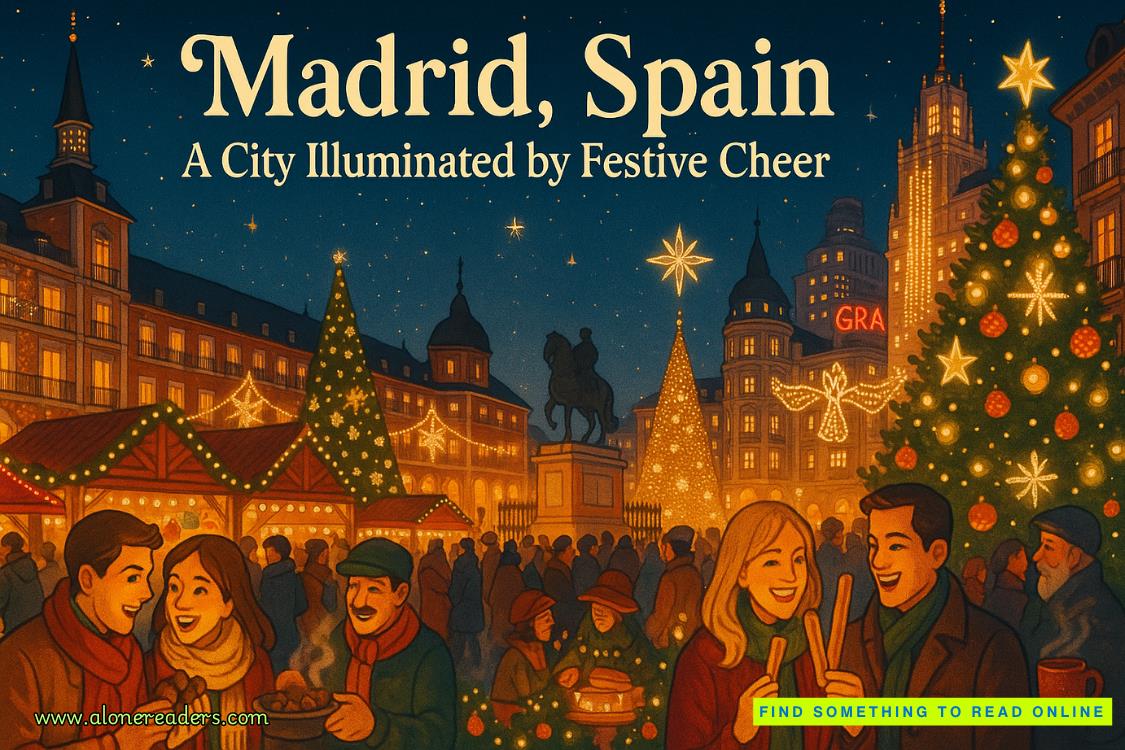Page 4 of All the Light We Cannot See
“The sultan’s doctors said it was a miracle, that the prince never should have survived such a violent wound. The nurses said the stone must have healing powers. The sultan’s jewelers said something else: they said the stone was the largest raw diamond anyone had ever seen. Their most gifted stonecutter spent eighty days faceting it, and when he was done, it was a brilliant blue, the blue of tropical seas, but it had a touch of red at its center, like flames inside a drop of water. The sultan had the diamond fitted into a crown for the prince, and it was said that when the young prince sat on his throne and the sun hit him just so, he became so dazzling that visitors could not distinguish his figure from light itself.”
“Are you sure this is true?” asks a girl.
“Hush,” says the boy.
“The stone came to be known as the Sea of Flames. Some believed the prince was a deity, that as long as he kept the stone, he could not be killed. But something strange began to happen: the longer the prince wore his crown, the worse his luck became. In a month, he lost a brother to drowning and a second brother to snakebite. Within six months, his father died of disease. To make matters even worse, the sultan’s scouts announced that a great army was gathering in the east.
“The prince called together his father’s advisers. All said he should prepare for war, all but one, a priest, who said he’d had a dream. In the dream the Goddess of the Earth told him she’d made the Sea of Flames as a gift for her lover, the God of the Sea, and was sending the jewel to him through the river. But when the river dried up, and the prince plucked it out, the goddess became enraged. She cursed the stone and whoever kept it.”
Every child leans forward, Marie-Laure along with them.
“The curse was this: the keeper of the stone would live forever, but so long as he kept it, misfortunes would fall on all those he loved one after another in unending rain.”
“Live forever?”
“But if the keeper threw the diamond into the sea, thereby delivering it to its rightful recipient, the goddess would lift the curse. So the prince, now sultan, thought for three days and three nights and finally decided to keep the stone. It had saved his life; he believed it made him indestructible. He had the tongue cut out of the priest’s mouth.”
“Ouch,” says the youngest boy.
“Big mistake,” says the tallest girl.
“The invaders came,” says the warder, “and destroyed the palace, and killed everyone they found, and the prince was never seen again, and for two hundred years no one heard any more about the Sea of Flames. Some said the stone was recut into many smaller stones; others said the prince still carried the stone, that he was in Japan or Persia, that he was a humble farmer, that he never seemed to grow old.
“And so the stone fell out of history. Until one day, when a French diamond trader, during a trip to the Golconda Mines in India, was shown a massive pear-cut diamond. One hundred and thirty-three carats. Near-perfect clarity. As big as a pigeon’s egg, he wrote, and as blue as the sea, but with a flare of red at its core. He made a casting of the stone and sent it to a gem-crazy duke in Lorraine, warning him of the rumors of a curse. But the duke wanted the diamond very badly. So the trader brought it to Europe, and the duke fitted it into the end of a walking stick and carried it everywhere.”
“Uh-oh.”
“Within a month, the duchess contracted a throat disease. Two of their favorite servants fell off the roof and broke their necks. Then the duke’s only son died in a riding accident. Though everyone said the duke himself had never looked better, he became afraid to go out, afraid to accept visitors. Eventually he was so convinced that his stone was the accursed Sea of Flames that he asked the king to shut it up in his museum on the conditions that it be locked deep inside a specially built vault and the vault not be opened for two hundred years.”
“And?”
“And one hundred and ninety-six years have passed.”
All the children remain quiet a moment. Several do math on their fingers. Then they raise their hands as one. “Can we see it?”
“No.”
“Not even open the first door?”
“No.”
“Have you seen it?”
“I have not.”
“So how do you know it’s really there?”
“You have to believe the story.”
“How much is it worth, Monsieur? Could it buy the Eiffel Tower?”
“A diamond that large and rare could in all likelihood buy five Eiffel Towers.”
Gasps.
“Are all those doors to keep thieves from getting in?”
“Maybe,” the guide says, and winks, “they’re there to keep the curse from getting out.”
The children fall quiet. Two or three take a step back.
Marie-Laure takes off her eyeglasses, and the world goes shapeless. “Why not,” she asks, “just take the diamond and throw it into the sea?”
The warder looks at her. The other children look at her. “When is the last time,” one of the older boys says, “you saw someone throw five Eiffel Towers into the sea?”
There is laughter. Marie-Laure frowns. It is just an iron door with a brass keyhole.
The tour ends and the children disperse and Marie-Laure is reinstalled in the Grand Gallery with her father. He straightens her glasses on her nose and plucks a leaf from her hair. “Did you have fun, ma chérie?”
A little brown house sparrow swoops out of the rafters and lands on the tiles in front of her. Marie-Laure holds out an open palm. The sparrow tilts his head, considering. Then it flaps away.
One month later she is blind.
Zollverein
Werner Pfennig grows up three hundred miles northeast of Paris in a place called Zollverein: a four-thousand-acre coalmining complex outside Essen, Germany. It’s steel country, anthracite country, a place full of holes. Smokestacks fume and locomotives trundle back and forth on elevated conduits and leafless trees stand atop slag heaps like skeleton hands shoved up from the underworld.
Werner and his younger sister, Jutta, are raised at Children’s House, a clinker-brick two-story orphanage on Viktoriastrasse whose rooms are populated with the coughs of sick children and the crying of newborns and battered trunks inside which drowse the last possessions of deceased parents: patchwork dresses, tarnished wedding cutlery, faded ambrotypes of fathers swallowed by the mines.
Werner’s earliest years are the leanest. Men brawl over jobs outside the Zollverein gates, and chicken eggs sell for two million reichsmarks apiece, and rheumatic fever stalks Children’s House like a wolf. There is no butter or meat. Fruit is a memory. Some evenings, during the worst months, all the house directress has to feed her dozen wards are cakes made from mustard powder and water.















